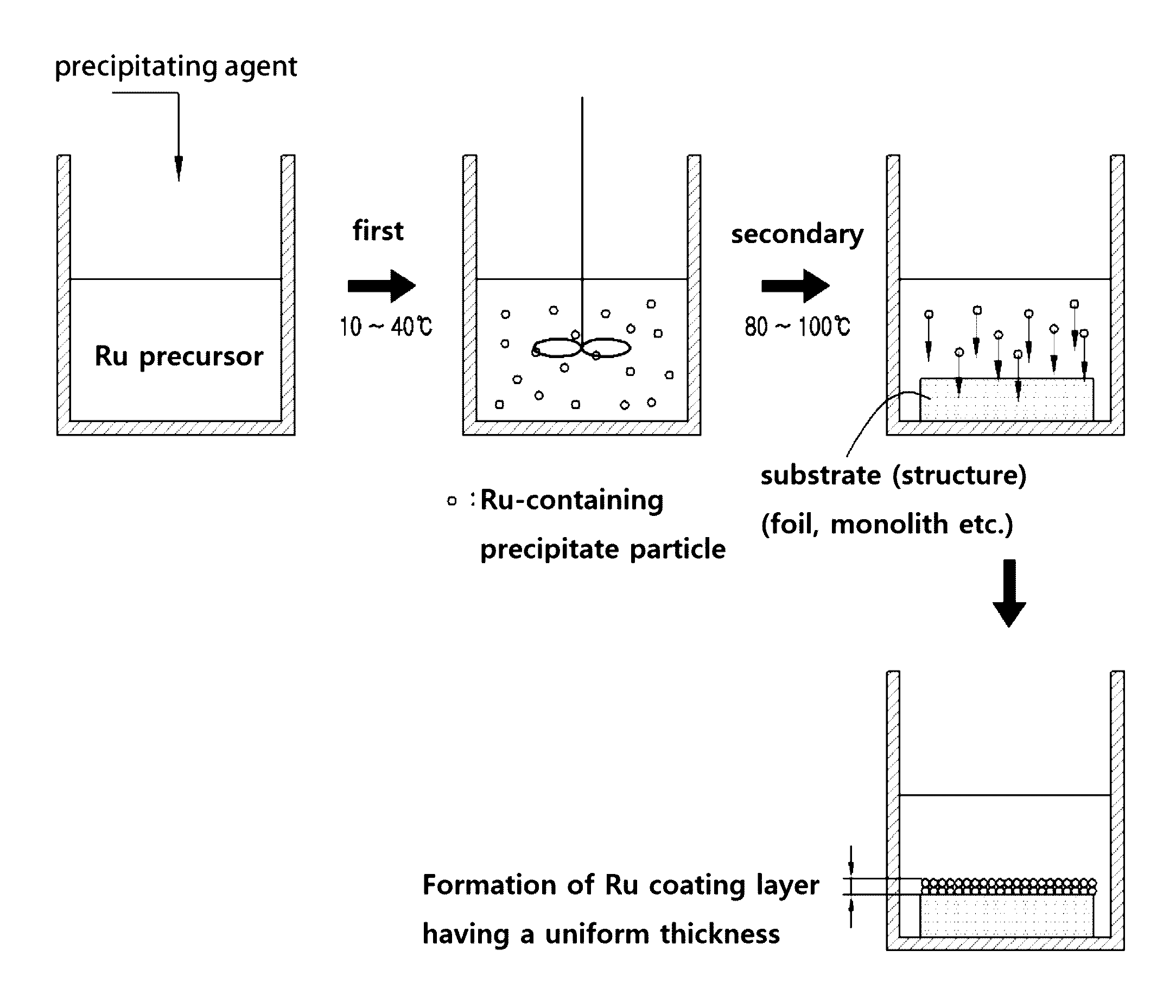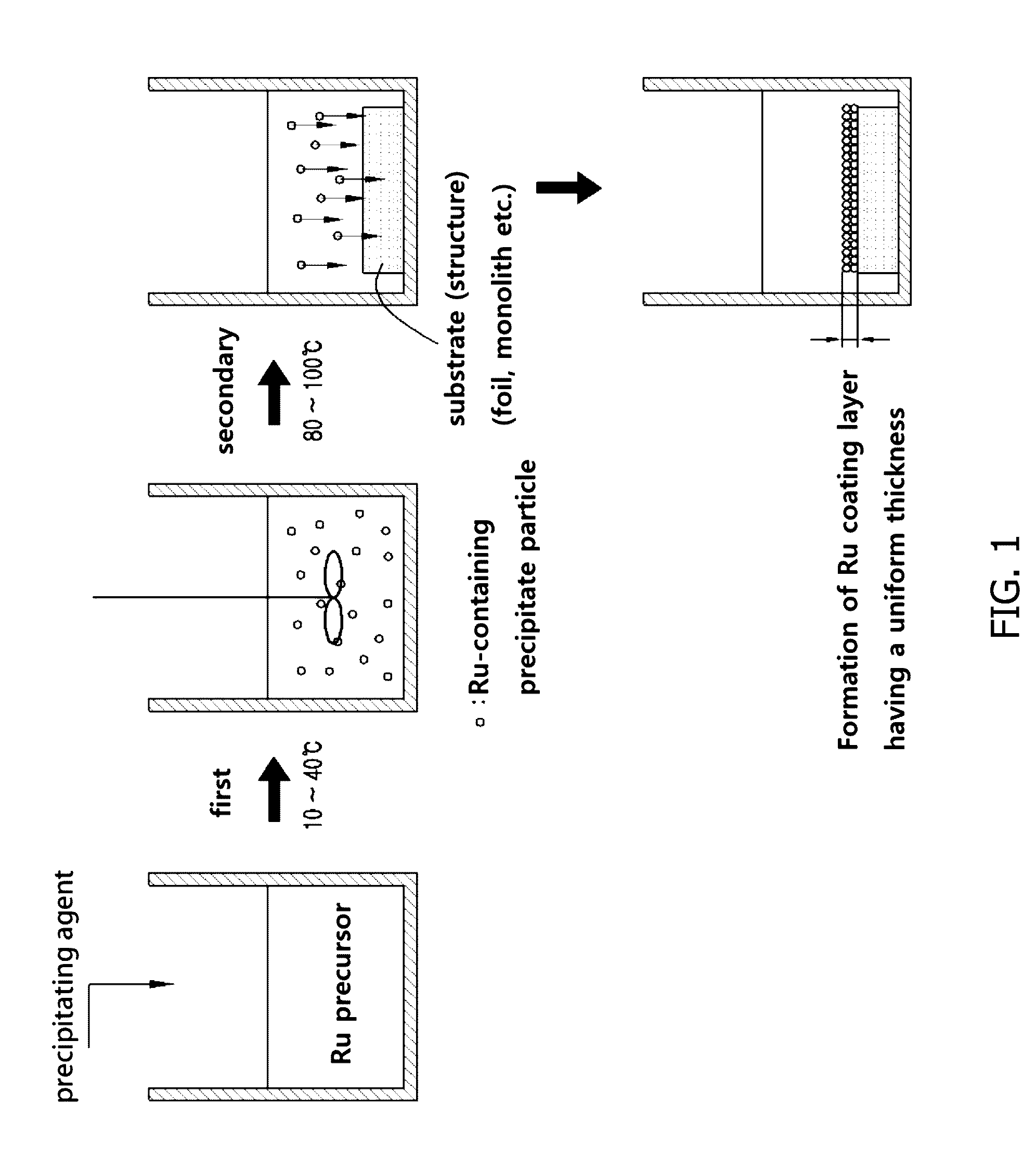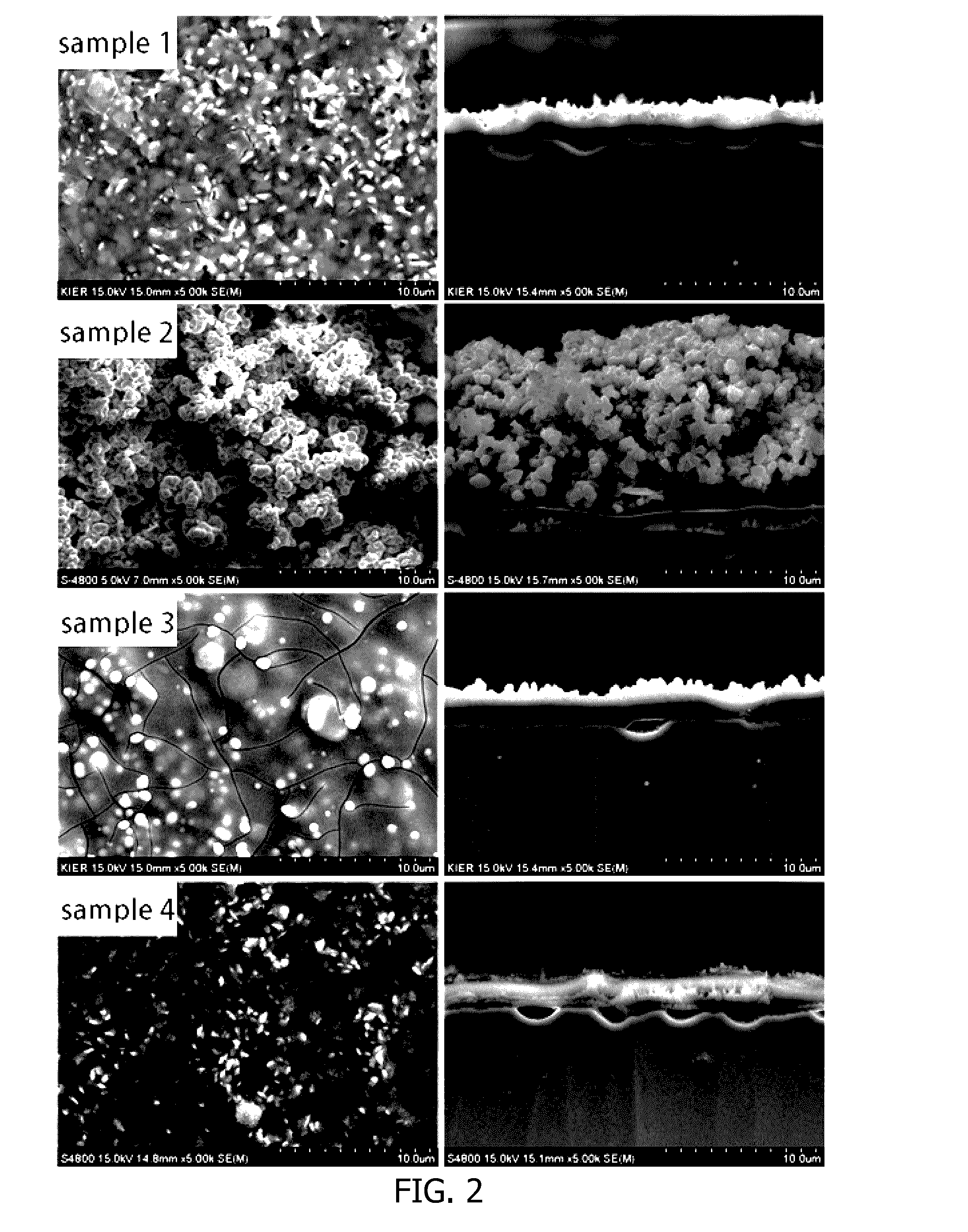Preparation method of catalyst comprising a ruthenium-containing catalyst layer formed on the body surface
- Summary
- Abstract
- Description
- Claims
- Application Information
AI Technical Summary
Benefits of technology
Problems solved by technology
Method used
Image
Examples
example 1
Analysis of Ruthenium Coating Layer Depending on pH of Precipitation Reaction Solution of Ruthenium Precursor
[0068]First, in the same manner as Korean Patent No. 1019234, a surface of an FeCr alloy foil, a metal substrate of a ferrochrome alloy material, was electrochemically treated at 5 V for 30 min and then heat-treated at 900° C. for 6 h to prepare the metal substrate for ruthenium coating wherein an alumina layer is uniformly formed as a carrier on the surface thereof.
[0069]Ruthenium nitrosyl nitrate as a ruthenium precursor was mixed with distilled water to give a solution in the concentration of 230 mM. Different amounts of ammonia solution as a precipitating agent were added to the above solution to prepare Samples 1 to 4 having a pH of 6, 7, 8 and 11, respectively. After each of the solutions thus obtained was first aged by stirring at room temperature (25° C.) for 24 h, the FeCr alloy foil, a substrate as prepared above, was immersed in the above aged solution and secondar...
example 2
Analysis of Ruthenium Coating Layer Depending on the Aging Condition
[0085]Among the aging conditions, the time of the first aging and the temperature of the secondary aging were changed, and then the amount of Ru coated and the thickness of coating layer were measured, respectively.
[0086]In Samples 9 and 10, the precursor-containing precipitation reaction solutions of pH 7 were first aged at room temperature (25° C.) with stirring for 6 h and 12 h, respectively, whereas the secondary aging time was fixed to 48 h at 100° C.
[0087]In Samples 11 and 12, the precursor-containing precipitation reaction solutions of pH 7 were first aged at room temperature (25° C.) with stirring for a fixed time of 24 h, whereas the secondary aging was performed at 80° C. and 90° C., respectively, for 48 h.
[0088]The FeCr alloy foils coated with Ru, prepared by changing the stirring time and temperature, were ion-milled and cross sections thereof were analyzed, and SEM images are shown in FIG. 4.
[0089]From ...
experiment 1
Performance Evaluation of Ru / Al2O3 Pellet Catalyst Vs. Ru / Al2O3 Coated FeCr Alloy Monolith Catalyst
[0091]A Ru coating layer was formed on the surface of FeCr alloy monolith on which an alumina carrier was formed in advance according to the same procedure as Sample 2 of Example 1, except that the substrate had a monolith form, not a foil form.
[0092]Catalyst performance evaluation on the steam reforming reaction of natural gas was carried out against the above-obtained FeCr alloy monolith catalyst on which the Ru coating layer was formed (Ru / Al2O3 coated FeCr alloy monolith catalyst) under the following experimental conditions. Prior to the catalyst performance evaluation, the catalyst was reduced under a hydrogen atmosphere at 700° C. for 3 h.
[0093]For comparison, the Ru / Al2O3 pellet catalyst was also reduced under the same conditions and subjected to the catalyst performance evaluation under the following experimental conditions. Here, the Ru / Al2O3 pellet catalyst was obtained from ...
PUM
| Property | Measurement | Unit |
|---|---|---|
| Temperature | aaaaa | aaaaa |
| Temperature | aaaaa | aaaaa |
| Temperature | aaaaa | aaaaa |
Abstract
Description
Claims
Application Information
 Login to View More
Login to View More - R&D Engineer
- R&D Manager
- IP Professional
- Industry Leading Data Capabilities
- Powerful AI technology
- Patent DNA Extraction
Browse by: Latest US Patents, China's latest patents, Technical Efficacy Thesaurus, Application Domain, Technology Topic, Popular Technical Reports.
© 2024 PatSnap. All rights reserved.Legal|Privacy policy|Modern Slavery Act Transparency Statement|Sitemap|About US| Contact US: help@patsnap.com










